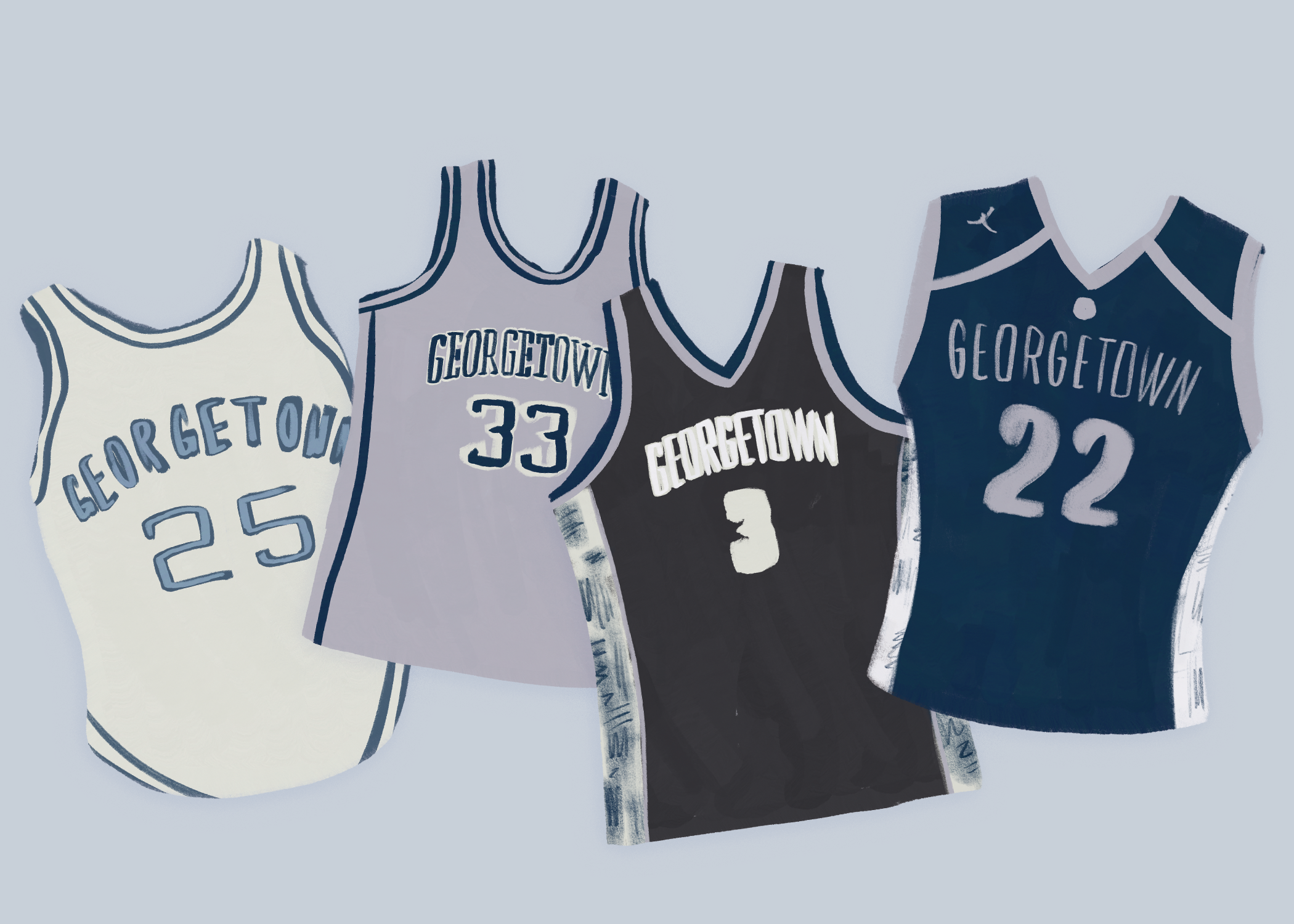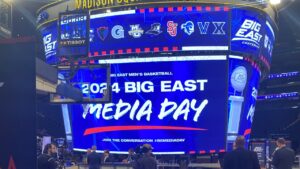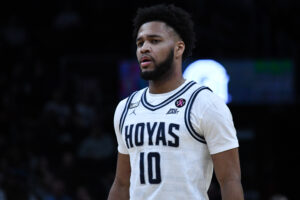In 1984, Georgetown men’s basketball team won the NCAA Championship. Forty years later, in 2024, the team lost all but two of their 20 BIG EAST conference games.
Georgetown’s only NCAA title to date remains that 1984 victory. Yet after a bounce-back year last season, it’s worth looking through the decades since Georgetown was a perennial championship contender to see what went wrong and consider the chances of a resurgence.
The 1980s were the peak years of Georgetown men’s basketball, when they were led by legendary head coach John Thompson Jr. From the 1979-80 to the 1989-90 seasons, the Hoyas recorded a 78.85% win rate, the best of any decade in the program’s history. Thompson Jr. resigned as head coach in 1999 with an overall record of 596-239, making him the team’s winningest head coach.
The 2000s marked the start of Georgetown’s true decline, although there were still some successful seasons. After a few years with just one NCAA Tournament appearance under coach Craig Esherick (MSB ’78, LAW ’82), John Thompson III—son of the National Championship-winning coach—led a Hoya resurgence. In 2007, the Hoyas made it to the semifinals of the NCAA Tournament.
The next year, the Hoyas managed a 28-6 record (15-3 BIG EAST) before falling to Davidson College in the second round of the tournament in a historic upset shaped by future NBA MVP Steph Curry. Since 2013, the Hoyas have only made the NCAA Tournament twice: their best result was a third-round loss in 2015.
In 2017, Patrick Ewing (CAS ’85), the former-Hoya forward instrumental in their NCAA Championship title, returned to the Hilltop as head coach. He only managed one NCAA Tournament appearance and a winning percentage of just 40.97%. The Ewing years marked the lowest point for Georgetown men’s basketball.
In 2023, the program brought in Ed Cooley, the previous head coach at conference rival Providence College, to turn the program around. Cooley’s first two seasons finished with a 9-23 (2-18 BIG EAST) and an 18-16 (8-12 BIG EAST) record, respectively, an upward trajectory that could be the start of a resurgence for the Hoyas.
Carrying on the legacy of a figure like Thompson Jr. is bound to be a monumental task for any head coach. Still, it’s clear that the on-court success of our athletic center’s namesake, not to mention his off-court impact, could provide Cooley with inspiration for Georgetown’s climb back up.
As Cooley tries to bring the Hoyas back to the top of the mountain, he must confront the fact that the Georgetown program is far from where it used to be.
To rebuild the program, Georgetown will need to bring in national-level talent, something that has been missing in recent years. A 2015 study by Richard Borghesi found that higher-ranked recruits bring a significant competitive advantage. Five-star recruits, those in the highest tier of high-school players, contributed more than twice as much to winning as any other level of recruit, according to Borghesi’s study. Notably, Georgetown has not brought in a five-star recruit since Isaac Copeland in 2014.
Looking at the players who went on to play professionally, it’s clear that top-level recruits were key to Georgetown’s most successful years. Out of 53 Hoyas drafted to the NBA, 26 played under Thompson Jr. Among those players are NBA legends Ewing, the first overall pick in the 1985 NBA Draft, and Allen Iverson, who has the 30th highest total points of anyone in NBA history. These players, recruited and drawn to the Hilltop by Thompson Jr., brought Georgetown to the top.
In the years after Thompson Jr.’s tenure, the quantity of NBA-level talent declined dramatically. Between 2013, when the Washington Wizards selected Otto Porter Jr. as the third overall pick, and 2025, when Thomas Sorber and Micah Peavy went 15th and 40th overall, respectively, zero Hoyas were drafted. Not coincidentally, the years between Porter Jr.’s draft and Sorber’s and Peavy’s draft were some of the least successful seasons in the program’s history.
The most consistently successful men’s college basketball programs follow a system: recruit high-quality players, win games, develop those players’ talent to go pro, and then replace those players with new, talented recruits who are drawn in by the program’s success. Rinse, repeat.
Duke University, perhaps the standard for a consistently successful program, has perfected this formula, bringing in and developing future NBA stars every year to fill out the team’s lineups. Still, with the rise of the transfer portal and the prevalence of “one-and-done” players like Sorber, who leave for the NBA after just one year of college basketball, it’s harder to keep talent around than it was in Thompson Jr.’s era.
During the Thompson Jr. years, Georgetown used that formula to achieve consistent success. They brought in talent like Ewing and Iverson, put together winning season after winning season, and then found new players to replace them. That formula for success is not easy—the best recruits have hundreds of schools clamoring to bring them in—but it is the way to build a national powerhouse basketball program.
To bring Georgetown back to the national championship contender status, Cooley will need to replicate that system. He has already shown promising signs, recruiting talented players like Peavy and Sorber, or junior guard KJ Lewis, who transferred to Georgetown from the University of Arizona this past offseason. Additionally, guard/forward Alex Constanza of the incoming 2026 recruiting class is Georgetown’s highest-ranked recruit since 2008. There’s still a long way to go, but Georgetown men’s basketball is taking the first crucial steps back up the mountain.





